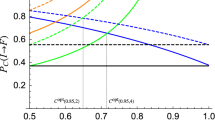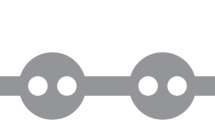Abstract
For technological purposes and theoretical curiosity, it is very interesting to have a building block that produces a considerable amount of entanglement between on-demand sites through a simple control of a few sites. Here, we consider permanently-coupled spin networks and study entanglement generation between qubit pairs to find low-complexity structures capable of generating considerable entanglement between various qubit pairs. We find that in axially symmetric networks the generated entanglement between some qubit pairs is rather larger than generic networks. We show that in uniformly-coupled spin rings each pair can be considerably entangled through controlling suitable vertices. To set the location of controlling-vertices, we observe that the symmetry has to be broken for a definite time. To achieve this, a magnetic flux can be applied to break symmetry via Aharonov-Bohm effect. Such a set up can serve as an efficient entanglement distributor bus in which each vertex-pair can be efficiently entangled through exciting only one fixed vertex and controlling the evolution time. The low-complexity of this scheme makes it attractive for use in nanoscale quantum information processors.
Similar content being viewed by others
References
Bennett C.H., Brassard G., Crepeau C., Jozsa R., Peres A., Wooters W.K.: Teleporting an unknown quantum state via dual 61 classical and Einstein–Podolsky–Rosen channels. Phys. Rev. Lett. 70, 1895 (1993)
Cirac J.I., Ekert A.K., Huelga S.F., Macchiavello C.: Dynamics of momentum entanglement in lowest-order QED. Phys. Rev. A 59, 4249 (1999)
Grover, L.K.: Quantum Telecomputation, quantph/9704012
Bennett C.H., Wiesner S.J.: Mixed-state entanglement and quantum error correction. Phys. Rev. Lett. 69, 2881 (1992)
Osborne T.J., Verstraete F.: Lieb-Robinson bounds and the generation of correlations and topological quantum order. Phys. Rev. Lett. 96, 220503 (2006)
Plastina F., Apollaro T.J.G.: Local control of entanglement in a spin chain. Phys. Rev. Lett. 99, 177210 (2007)
Benjamin S.C., Bose S.: Quantum computing with an always-on Heisenberg interaction. Phys. Rev. Lett. 90, 247901 (2003)
DiVincenzo D.P., Bacon D., Kempe J., Burkard G., Whaley K.B.: Universal quantum computation with the exchange interaction. Nature 408, 339–342 (2000)
Bose S., Jin B.-Q., Korepin V.E.: Entanglement in the XY spin chain. Phys. Rev. A 72, 022345 (2005)
Nielsen M.A., Chuang I.L.: Quantum Computation and Quantum Information. Cambridge University Press, Cambridge (2000)
D’Amico I.: Quantum dot-based quantum buses for quantum computer hardware architecture. Microelectronics Journal 37, 1440 (2006)
Duan L.-M., Demler E., Lukin M.D.: Controlling spin exchange interactions of ultracold atoms in optical lattices. Phys. Rev. Lett. 91, 090402 (2003)
Wootters W.K.: Entanglement of formation of an arbitrary state of two qubits. Phys. Rev. Lett. 80, 2245 (1998)
Benjamin S.C., Ardavan A., Briggs G.A.D., Britz D.A., Gunlycke D., Jefferson J., Jones M.A.G., Leigh D.F., Lovett B., Khlobystov A.N, Lyon S.A., Morton J.J.L., Porfyrakis K., Sambrook M.R., Tyryshkin A.M.: Towards fullerene-based quantum computer. J. Phys. Condens. Matter 18, S867–S883 (2006)
Gladchenko S., Olaya D., Dupont-Ferrier E., Doujot B., Ioffe L.B., Gershenson M.E.: Superconducting nanocircuits for topologically protected qubits. Nat. Phys. 5, 48–53 (2009)
Bayer M., Hawrylak P., Hinzer K., Fafard S., Korkusinski M., Wasilewski Z.R., Stern O., Forchel A.: Coupling and entangling of quantum states in quantum dot molecules. Science 291, 451–453 (2001)
Murao M., Jonathan D., Plenio M.B., Vedral V.: Quantum telecloning and multiparticle entanglement. Phys. Rev. A 59, 156 (1999)
Koike S., Takahashi H., Yonezawa H., Takei N., Braunstein S.L., Aoki T., Furusawa A.: Demonstration of quantum telecloning of optical coherent states. Phys. Rev. Lett. 96, 060504 (2006)
Shor P.W.: Scheme for reducing decoherence in quantum computer memory. Phys. Rev. A 52, R2493 (1995)
Bennett C.H., DiVincenzo D.P., Smolin J.A., Wootters W.K.: Mixed-state entanglement and quantum error correction. Phys. Rev. A 54, 3824 (1996)
Peierls R.E.: Theory of diamagnetism of conduction electrons. Z. Phys. 80, 763 (1933)
Byers N., Yang C.N.: Theoretical considerations concerning quantized magnetic flux in superconducting cylinders. Phys. Rev. Lett. 7, 46 (1961)
Shastry B.S., Sutherland B.: Twisted boundary conditions and effective mass in Heisenberg-Ising and Hubbard rings. Phys. Rev. Lett. 65, 243 (1990)
Author information
Authors and Affiliations
Corresponding author
Rights and permissions
About this article
Cite this article
Ghojavand, M. A low complexity scheme for entanglement distributor buses. Quantum Inf Process 10, 519–532 (2011). https://doi.org/10.1007/s11128-010-0214-x
Received:
Accepted:
Published:
Issue Date:
DOI: https://doi.org/10.1007/s11128-010-0214-x




